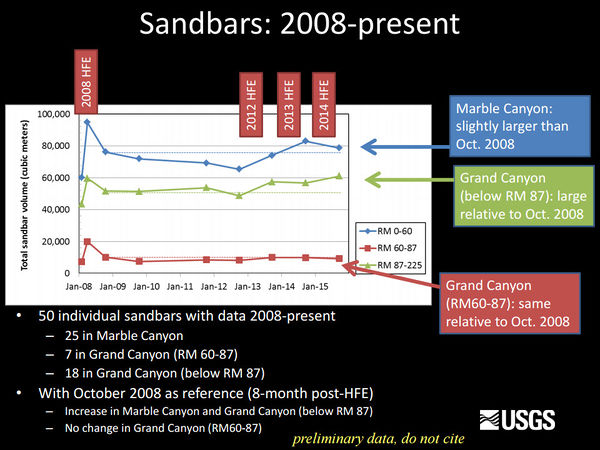Difference between revisions of "GCDAMP Sediment"
Cellsworth (Talk | contribs) |
Cellsworth (Talk | contribs) |
||
| Line 144: | Line 144: | ||
|style="color:#000;"| | |style="color:#000;"| | ||
| − | == | + | ==[http://hachcompany.custhelp.com/app/answers/answer_view/a_id/1000336/~/what-is-the-difference-between-the-turbidity-units-ntu,-fnu,-ftu,-and-fau%3F-what Measuring turbidity]== |
| − | [http:// | + | |
| + | Question: What is the difference between the turbidity units NTU, FNU, FTU, and FAU? What is a JTU? | ||
| + | |||
| + | Summary: Turbidity units NTU, FNU, FTU, FAU, and JTU | ||
| + | |||
| + | Answer: | ||
| + | *NTU stands for Nephelometric Turbidity Unit and signifies that the instrument is measuring scattered light from the sample at a 90-degree angle from the incident light. | ||
| + | *FNU stands for Formazin Nephelometric Units and also signifies that the instrument is measuring scattered light from the sample at a 90-degree angle from the incident light. FNU is most often used when referencing the ISO 7027 (European) turbidity method. | ||
| + | *NTU is most often used when referencing the USEPA Method 180.1 or Standard Methods For the Examination of Water and Wastewater. | ||
| + | *When formazin was initially adopted as the primary reference standard for turbidity, units of FTU or Formazin Turbidity Units were used. These units, however, do not specify how the instrument measures the sample. | ||
| + | |||
| + | FAU or Formazin Attenuation Units signify that the instrument is measuring the decrease in transmitted light through the sample at an angle of 180 degrees to the incident light. This type of measurement is often made in a spectrophotometer or colorimeter and is not considered a valid turbidity measurement by most regulatory agencies. | ||
| + | |||
| + | A JTU or Jackson Turbidity Unit is a historical unit used when measurements were made visually using a Jackson Candle Turbidimeter. Water was poured into a tube until a flame underneath the tube could no longer be distinguished. | ||
| + | |||
| + | The turbidity units NTU, FNU, FTU, AND FAU are all based on calibrations using the same formazin primary standards. Therefore when a formazin standard is measured, the value for each of these units will be the same, however the value on samples may differ significantly. | ||
| + | |||
| + | ---- | ||
*Eddies occur adjacent to rapids and the flow in the eddy is related to the flow characteristics in the rapid. Sand bars were typically larger before the dam.(Science Background for HFE Planning- Jack Schmidt, GCMRC_KA 2013) | *Eddies occur adjacent to rapids and the flow in the eddy is related to the flow characteristics in the rapid. Sand bars were typically larger before the dam.(Science Background for HFE Planning- Jack Schmidt, GCMRC_KA 2013) | ||
Revision as of 16:51, 21 September 2016
|
|
Sediment and GeomorphologyErosion of sandbars (beaches) along the Colorado River in Grand Canyon was first reported in the early 1970s, approximately 10 years after completion of Glen Canyon Dam. Since then, scientific studies have been conducted to monitor changes in sandbars and changes in the amount of sand stored on the bed of the river. One of the outcomes of these studies has been the implementation of flow experiments intended to rebuild eroded sandbars, especially by the release of controlled floods, also called “High Flow Experiments, or HFEs,” from Glen Canyon Dam. The sediment and geomorphology projects at Grand Canyon Monitoring and Research Center include the collection and processing of data to provide information needed to conduct controlled floods and to evaluate the outcome of each controlled flood and the long-term effects of controlled floods and normal dam operations on sediment-related resources.
Desired Future Condition for Sediment-Related ResourcesHigh elevation open riparian sediment deposits along the Colorado River in sufficient volume, area, and distribution so as to provide habitat to sustain native biota and desired ecosystem processes |
| --- |
--- |
--- |
|---|



